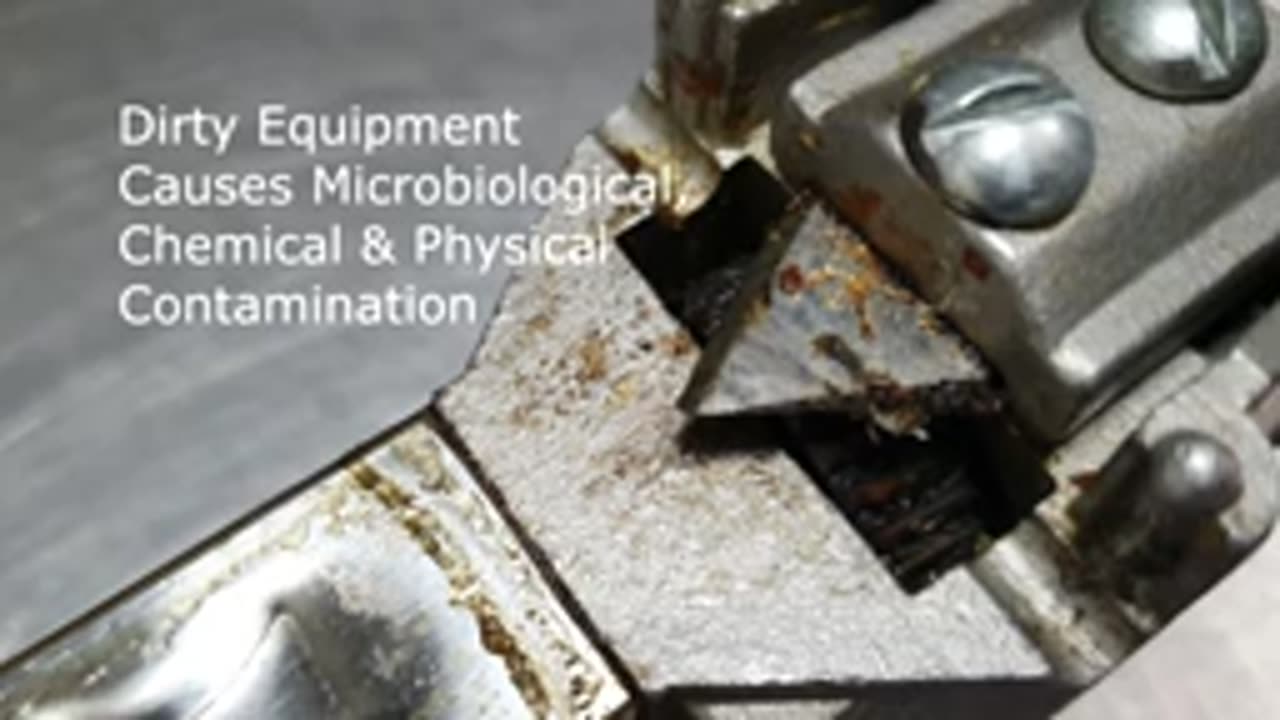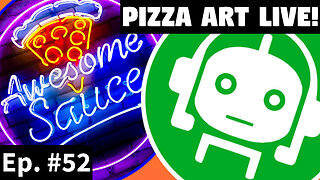Premium Only Content

Restaurant SFBB Training- Cross contaminaton by Dirty Equipment
### **Cross-Contamination by Dirty Equipment in Restaurants: SFBB Training**
In the **Safer Food Better Business (SFBB)** framework, dirty or improperly cleaned equipment is a major cause of cross-contamination in restaurants. Harmful bacteria like **Salmonella**, **E. coli**, and **Listeria** can transfer from raw food residue or allergens to ready-to-eat foods, utensils, and surfaces. Preventing this is critical for food safety and achieving compliance with UK food hygiene regulations.
---
### **How Dirty Equipment Causes Cross-Contamination**
1. **Direct Transfer**: Residue from raw food on unclean knives, chopping boards, or utensils contaminates ready-to-eat food.
2. **Build-Up of Bacteria**: Equipment not cleaned properly allows bacteria to multiply, especially if left at room temperature.
3. **Allergen Risks**: Traces of allergens left on equipment can pose serious health risks to customers with allergies.
4. **Pest Contamination**: Dirty equipment attracts pests, increasing the risk of contamination.
---
### **Examples of Risky Practices**
- Using the same knife for raw chicken and cooked food without cleaning.
- Chopping vegetables on a board previously used for raw meat.
- Failing to clean and sanitize mixers, slicers, or other machinery between uses.
- Neglecting to clean equipment thoroughly after allergen exposure (e.g., nuts, gluten-containing products).
---
### **SFBB Guidelines for Preventing Cross-Contamination by Dirty Equipment**
#### **1. Use Colour-Coded Equipment**
- Assign specific colours to different food types (e.g., red for raw meat, green for vegetables, yellow for cooked food).
- Ensure staff are trained to use the correct equipment for each task.
#### **2. Clean and Sanitize Equipment Regularly**
- **After Each Use**: Clean knives, boards, utensils, and machines immediately after use with hot, soapy water and a food-safe sanitizer.
- **Deep Cleaning**: Schedule regular deep cleans of all kitchen equipment, especially hard-to-reach areas in slicers, blenders, and mixers.
- **Disassemble When Necessary**: Take apart complex equipment to ensure all parts are cleaned.
#### **3. Replace Worn Equipment**
- Discard cutting boards, utensils, or other equipment with cracks, scratches, or excessive wear where bacteria can hide.
- Replace sponges and cleaning cloths frequently to avoid spreading bacteria.
#### **4. Implement Cleaning Schedules**
- Use the SFBB **cleaning checklist** to ensure all equipment is cleaned and sanitized regularly.
- Display cleaning schedules where staff can see them, assigning responsibility for each task.
#### **5. Train Staff**
- Train all team members to understand the risks of dirty equipment and proper cleaning procedures.
- Emphasize the importance of cleaning and sanitizing after handling raw food or allergens.
---
### **Proper Cleaning Procedure for Equipment**
1. **Pre-Clean**: Remove leftover food debris by rinsing or wiping the equipment.
2. **Wash**: Use hot water (at least 60°C) and a detergent to wash all surfaces.
3. **Rinse**: Rinse with clean, hot water to remove detergent and loosened debris.
4. **Sanitize**: Apply a food-safe sanitizer to kill bacteria. Follow the manufacturer's instructions for contact time.
5. **Dry**: Allow equipment to air-dry completely or use disposable paper towels. Avoid using reusable cloths that can reintroduce bacteria.
---
### **Key Areas to Monitor for Dirty Equipment Risks**
- **Chopping Boards**: Ensure they’re cleaned between tasks and replaced if deeply scratched.
- **Knives and Utensils**: Wash immediately after use, especially between raw and ready-to-eat foods.
- **Mixers and Blenders**: Disassemble and clean thoroughly after each use.
- **Storage Racks and Drawers**: Check for dirt and residue build-up.
- **Handheld Equipment**: Thermometers, tongs, and other small tools must be cleaned regularly.
---
### **SFBB Record Keeping**
- Use the **Cleaning Schedule Log** in the SFBB pack to document:
- Daily cleaning tasks.
- Who performed the cleaning.
- Verification that tasks were completed.
- Keep records up-to-date for inspections and audits.
---
### **Benefits of Proper Equipment Hygiene**
1. Prevents foodborne illnesses caused by bacterial contamination.
2. Reduces the risk of allergen cross-contact.
3. Improves compliance with **Food Hygiene Ratings** (aiming for 5 stars).
4. Ensures a safe and clean environment for food preparation.
Would you like a **custom cleaning checklist** or assistance tailoring the SFBB training materials to your restaurant's operations?
-
 6:43
6:43
HSESafetyInformation
4 months agoLahori Chanay Recipe - Lahori Cholay Recipe - Chana Chana Masala
49 -
 6:05:51
6:05:51
SpartakusLIVE
12 hours ago#1 Texas FARMBOY Turned World-Wide Gaming SUPERSTAR amasses NERDS in chat from the ENDS OF THE EARTH
88K1 -
 9:37
9:37
MattMorseTV
15 hours ago $4.20 earnedThis just ENDED his CAREER.
21.6K53 -
 9:10:30
9:10:30
Spartan
15 hours agoPro Halo Player | Grinding, Another day to try and get better
62.2K2 -
 2:31:12
2:31:12
Nerdrotic
12 hours ago $8.97 earnedCosmic Summit Recap, Skinwalker Ranch Season 6 | Forbidden Frontier #106
134K8 -
 3:04:51
3:04:51
This is the Ray Gaming
7 hours ago $4.86 earnedSunday Night With The Homies
40K4 -
 2:26:29
2:26:29
vivafrei
21 hours agoEp. 270: MASSIVE SCOTUS WINS! Big Beautiful Bill! New-Scum Sues! Diddy Watch! Big Apple Rot & MORE
153K139 -
 8:38:54
8:38:54
a12cat34dog
15 hours agoTHE *NEW* KRATOS IS EPIC :: God of War (2018) :: FIRST-TIME PLAYING {18+}
48.9K3 -
 3:12:50
3:12:50
EricJohnPizzaArtist
4 days agoAwesome Sauce PIZZA ART LIVE Ep. #52: GEYCK!
44.4K3 -
 57:30
57:30
RiftTV/Slightly Offensive
11 hours agoTHIS is Where It ALL Went Wrong.. The Rise of NEOCONS | Rift Book Club | B1E2
68.3K46